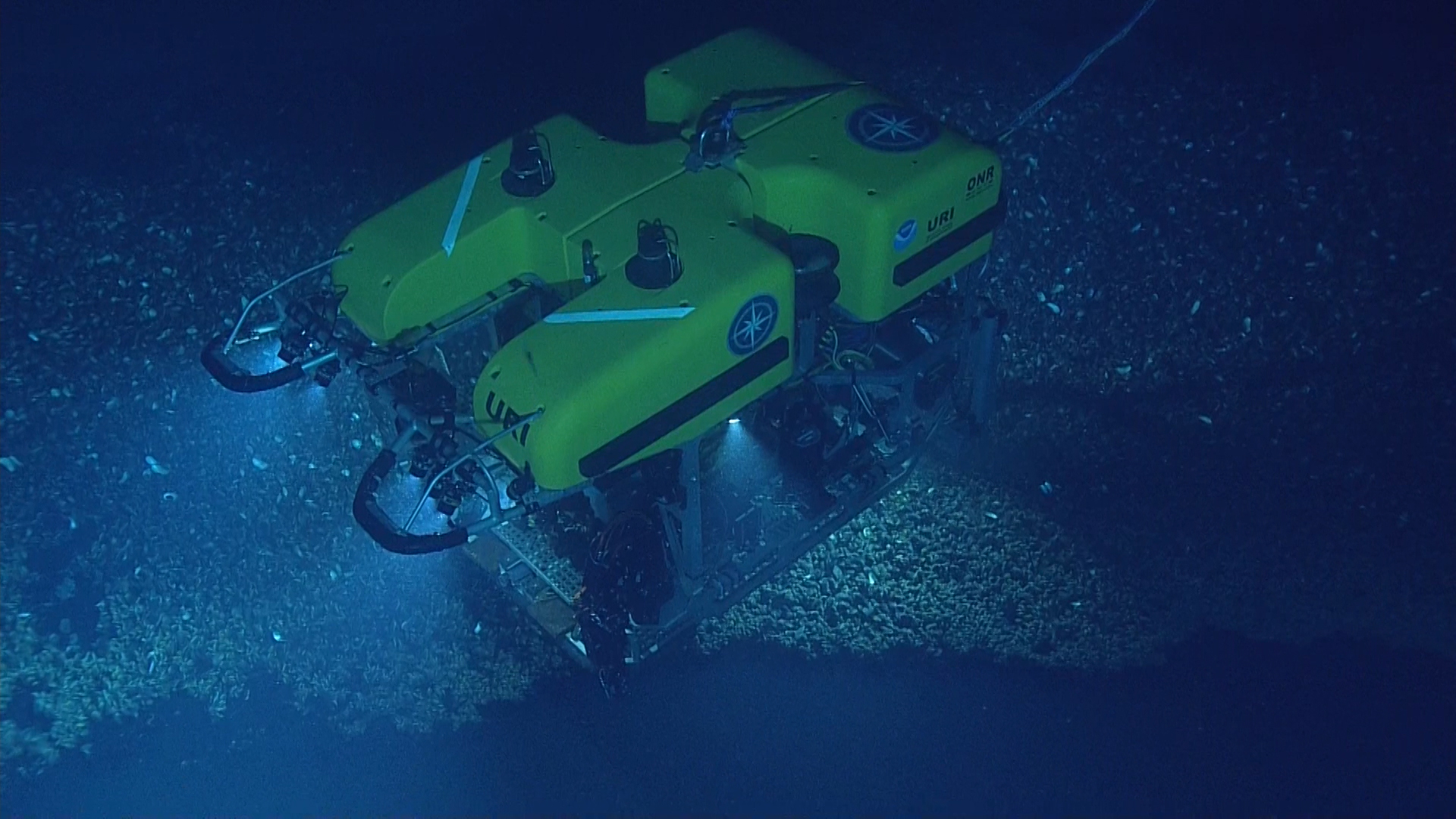
Did you know that there are coral reefs far below the ocean’s surface? While most corals are found in brightly lit shallow waters, where their resident photosynthetic algae (called zooxanthellae) can easily turn sunlight into food, corals can also live hundreds and even thousands of feet underwater!
In fact, researchers have recently mapped the largest known deep-sea coral reef on the planet along the southeastern United States coast, covering an area nearly three times the size of Yellowstone National Park. The reef spans depths of about 650-3,300 feet (200-1,000 meters) deep, where corals and other animals live in total darkness.
Between shallow waters and the deep ocean lies another coral habitat: the mesophotic zone. Here, there is some light, but it is much darker than what we might typically think of when we picture a coral reef. This means mesophotic corals must get food in a different way than shallow-water species, which rely heavily on their zooxanthellae to produce food. Mesophotic corals likely directly feed on plankton and other organic material in the water much more than surface corals do.


There is still much to learn about these complex ecosystems, and scientists from NOAA and other institutions are currently working to better understand and restore mesophotic communities in the Gulf of Mexico that were impacted by the Deepwater Horizon oil spill in 2010. This effort includes caring for mesophotic corals in public aquariums. Frost Science is part of a small group of aquariums that currently houses these corals. We are also a critical part of the work to study how they live and reproduce – and ultimately, how to restore them.
As part of this work, in October 2023, Frost Science Senior Aquarist Paul Gehl and Aquarist Hannah Rasmussen joined NOAA, Mississippi Aquarium, the US Geological Survey, Southern Mississippi University, and University of North Carolina-Wilmington on a seven-day expedition in the Gulf of Mexico. Using remotely operated vehicles capable of diving deep into the mesophotic zone, the team collected corals for study (the video below, taken in 2022 at some of the same mesophotic sites, shows what these ecosystems look like). They also collected live rock, ocean rock populated by algae, microbes, and other tiny marine life, to test whether it helps mesophotic corals grow better in aquariums.
The expedition was a fantastic opportunity, not only for Frost Science as an institution but also for Gehl and Rasmussen professionally. “Seeing the natural habitat for these animals was such an eye-opening experience,” says Rasmussen. “Learning about the specifics of their environment, like light levels, salinity, and water flow, helps us improve what we do here in our aquariums,” adds Gehl. Both agree that applying their skills and knowledge to restoration work in the field was a hugely satisfying experience. Says Gehl, “It brings the whole project full circle.”
Frost Science currently cares for 21 colonies of mesophotic corals from two species, Swiftia exserta and Muricea sp. These corals were collected from the wild in 2021 and arrived at Frost Science in June 2023. They are currently being cared for behind the scenes, but we aim to someday be able to have them on public view to introduce guests to mesophotic ecosystems and their unique biodiversity.
Cover image courtesy of Inner Space Center and the University of Rhode Island.